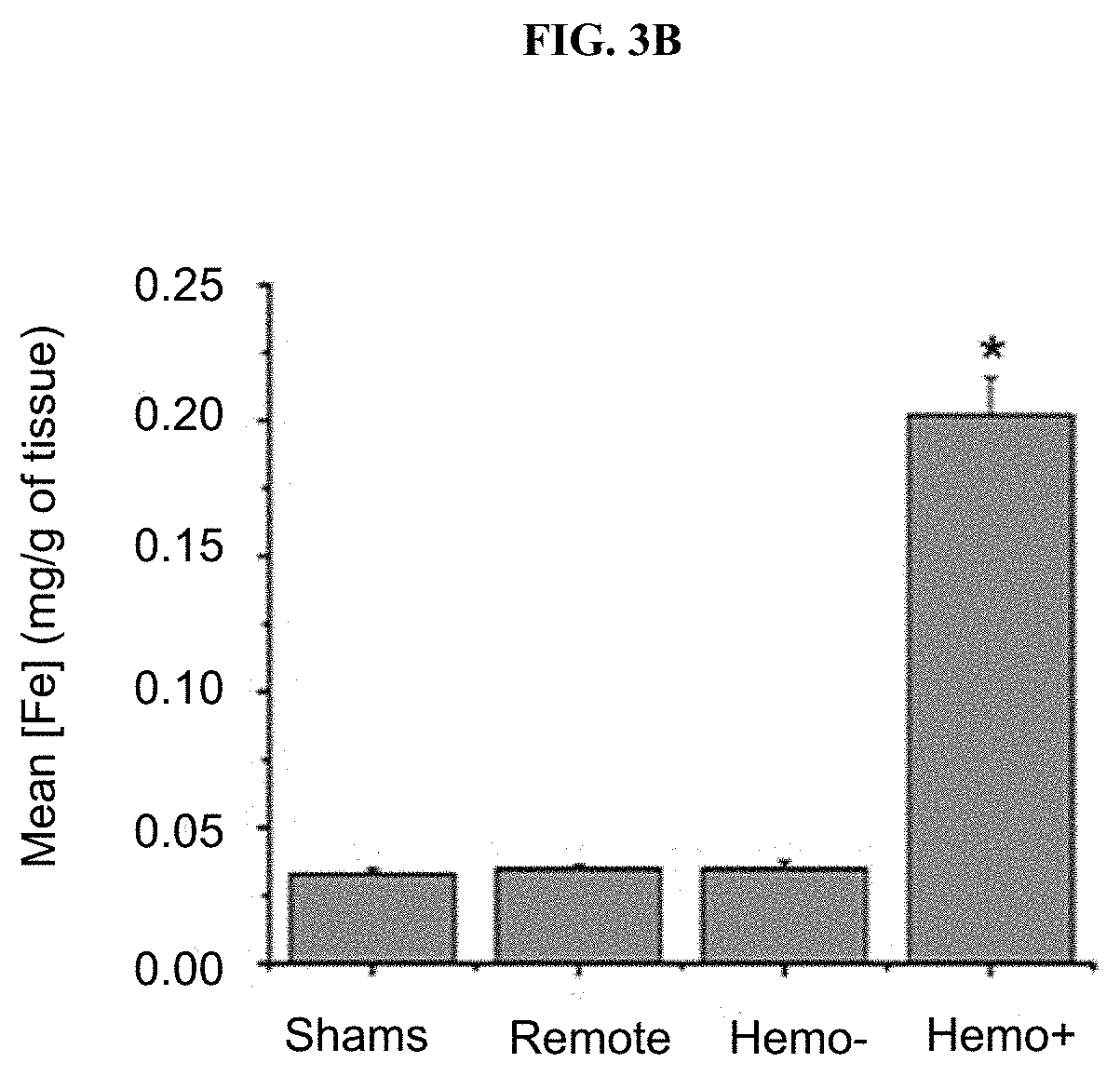Assessment of iron deposition post myocardial infarction as a marker of myocardial hemorrhage
a myocardial infarction and iron deposition technology, applied in the field of diagnosis of reperfusion and non-reperfusion hemorrhage, can solve the problems of limited value of individual patient differentiation strategies, acute myocardial infarction (ami), and the association of reperfusion therapies with post-infarct hemorrhag
- Summary
- Abstract
- Description
- Claims
- Application Information
AI Technical Summary
Benefits of technology
Problems solved by technology
Method used
Image
Examples
example 1
Surgical Procedure
[0146]Canines (n=23, 20-25 kg) were enrolled and studied according to the protocols approved by the Institutional Animal Care and Use Committee. Each dog was given an intramuscular injection of the pre-anesthetic tranquilizer Innovar (0.4 mg / ml of fentanyl and 20 mg / ml of droperidol) at a dose of 1 ml / 25-50 kg of body weight. Subsequently, the dog was anesthetized with an intravenous injection of Propofol (5.0-7.5 mg / kg), endotracheally intubated and maintained on gas anesthesia (2.0-2.5% isoflurane with 100% oxygen). Animals were artificially ventilated at 1-2 L / min with the respiration rate being continuously adjusted to maintain partial pressure of CO2 in blood (PaCO2) between 30 and 35 mmHg. Left lateral thoracotomy was performed at the fourth intercostal space, and the exposed heart was suspended in a pericardial cradle (FIG. 10). Aortic and left atrial catheters were inserted and secured for invasive blood pressure monitoring and drug deli...
example 2
Free-Breathing, ECG-Triggered, Dark-Blood Prepared 3D T2* MRI
[0182]Breath-held, ECG-triggered, 2D T2* mapping at 1.5 T is the current standard for identifying iron overload in the heart. However, this approach has a number of limitations for our application: (i) Our early studies and the literature suggest that, in the setting of large infarcts, breath holding may trigger arrhythmias. In our experience, repetitive breath-held image acquisitions have led to fatal arrhythmias in canines with hemorrhage; and non-fatal arrhythmias demand undesirably long breath holding times; (ii) Partial volume effects in the through-plane direction can significantly reduce the conspicuity of the regions with an iron overload; (iii) Bright blood T2* maps are prone to significant image artifacts (ghosts and smears), particularly when TEs are long. At 1.5 T, the sensitivity for visualizing smaller iron depositions can be limited and require the use of longer TEs in spite first-order flow compensation at ...
example 3
Detecting Acute Myocardial Reperfusion Hemorrhage (aMRH) with MRI
[0184]T2 and T2* MRI have both been shown to be sensitive for detecting aMRH. However, there is (i) no consensus on which of the two methods yield the most desirable means for detecting aMRH, and (ii) no histology studies that confirm T2 or T2* MM can and do identify myocardial hemorrhage (O'Regan D P, Ahmed R, Karunanithy N, et al. Reperfusion hemorrhage following acute myocardial infarction: assessment with T2* mapping and effect on measuring the area at risk. Radiology 2009; 250:916-922. Ganame J, Messalli G, Dymarkowski S, et al. Impact of myocardial haemorrhage on left ventricular function and remodelling in patients with reperfused acute myocardial infarction. Eur Heart J 2009; 30:1440-1449). The inventors determined the optimal quantitative MRI approach for detecting a MRH and to validate that iron composites are found within hemorrhagic infarctions on the basis tissue histology.
[0185]Ischemia reperfusion injury...
PUM
 Login to View More
Login to View More Abstract
Description
Claims
Application Information
 Login to View More
Login to View More - R&D
- Intellectual Property
- Life Sciences
- Materials
- Tech Scout
- Unparalleled Data Quality
- Higher Quality Content
- 60% Fewer Hallucinations
Browse by: Latest US Patents, China's latest patents, Technical Efficacy Thesaurus, Application Domain, Technology Topic, Popular Technical Reports.
© 2025 PatSnap. All rights reserved.Legal|Privacy policy|Modern Slavery Act Transparency Statement|Sitemap|About US| Contact US: help@patsnap.com



